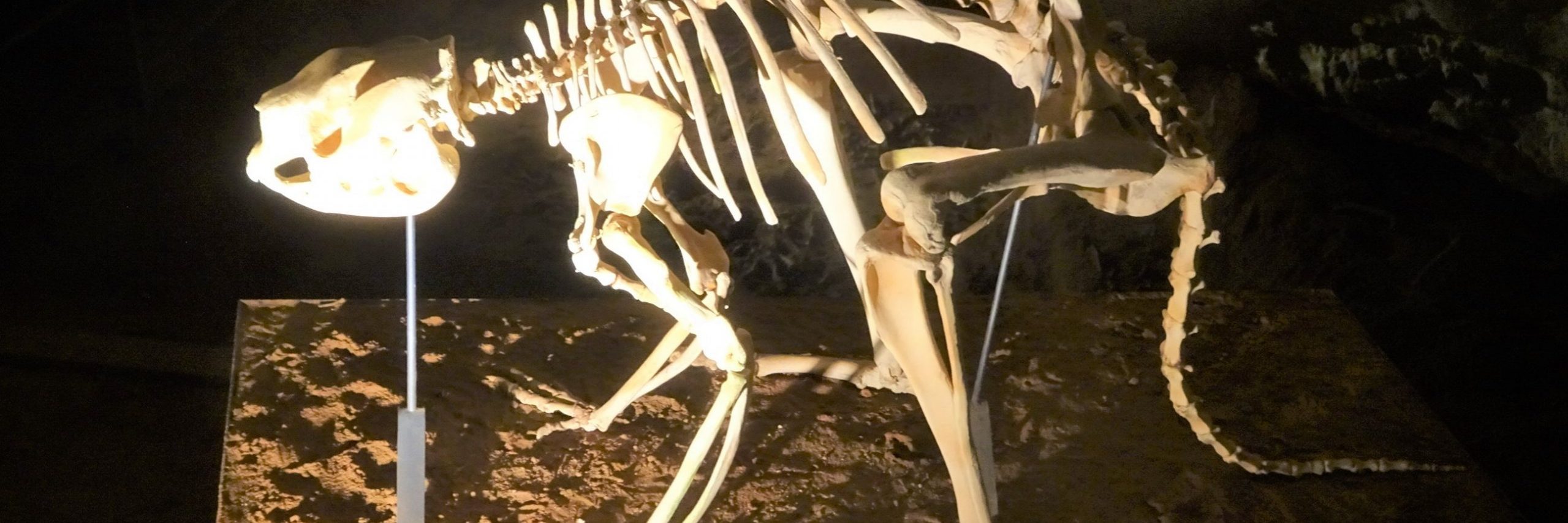The short-faced kangaroo, or Simosthenurus occidentalis, went extinct over 40,000 years ago. Image source: denisbin, via Flickr.
Researchers have discovered a near-complete fossil of an extinct short-faced kangaroo, estimated to be 50,000 years old.
Found in the undisturbed Nightshade Cave in East Gippsland, Victoria, the specimen is one of the most complete found in Australia.
A team comprised of rangers, scientists, and citizen cavers extracted the fossil after over 58 hours of caving across a two-year period.
The team uncovered 150 bones, making up 71 per cent of the animal’s skeleton. It is currently the most complete fossil to be found in a Victorian cave.
“Most of the bones that are missing are very small elements, like knuckles from the hands, and small bones in the feet,” said Tim Zeigler, Museums Victoria vertebrate palaeontology collections manager.
“The rarity of finding a single, near complete example of an individual like this, it’s the dream for any palaeontologist.”
“The last and first time a comparably complete example of this species of kangaroo was found was in the mid-1970s. It’s been nearly 50 years.”
The fossil is a juvenile and may have weighed as much as 80 kilograms.
Researchers dated the charcoal just above the fossil, providing a minimum age of 49,400 years old.
The short-faced kangaroo, also known by the scientific name Simosthenurus occidentalis, lived in Australia during the Pliocene, becoming extinct around 42,000 years ago.
Mid-sized for the Simosthenurus genus, S. occidentalis is estimated to have stood at a similar height to modern large kangaroos, such as red kangaroos or eastern greys, but was twice as heavy.
The heavier structure of the kangaroo leads researchers to suggest that S. occidentalis may not have hopped, but instead walked in a similar motion to humans.
“The entire skeleton — from its shoulders and it’s arms, through its backbone to his hips and its legs and its tail — tells you something very different from what a living kangaroo tells you”, said Mr Zeigler.
The shorter face and dental structure of S. occidentalis resembles those of koalas and panda bears, leading to belief that the species consumed tough vegetation rather than the grazing diet of modern kangaroos.
Starting from 24 June, the S. occidentalis fossil will be on public display in the Research Institute Gallery at Melbourne Museum.





